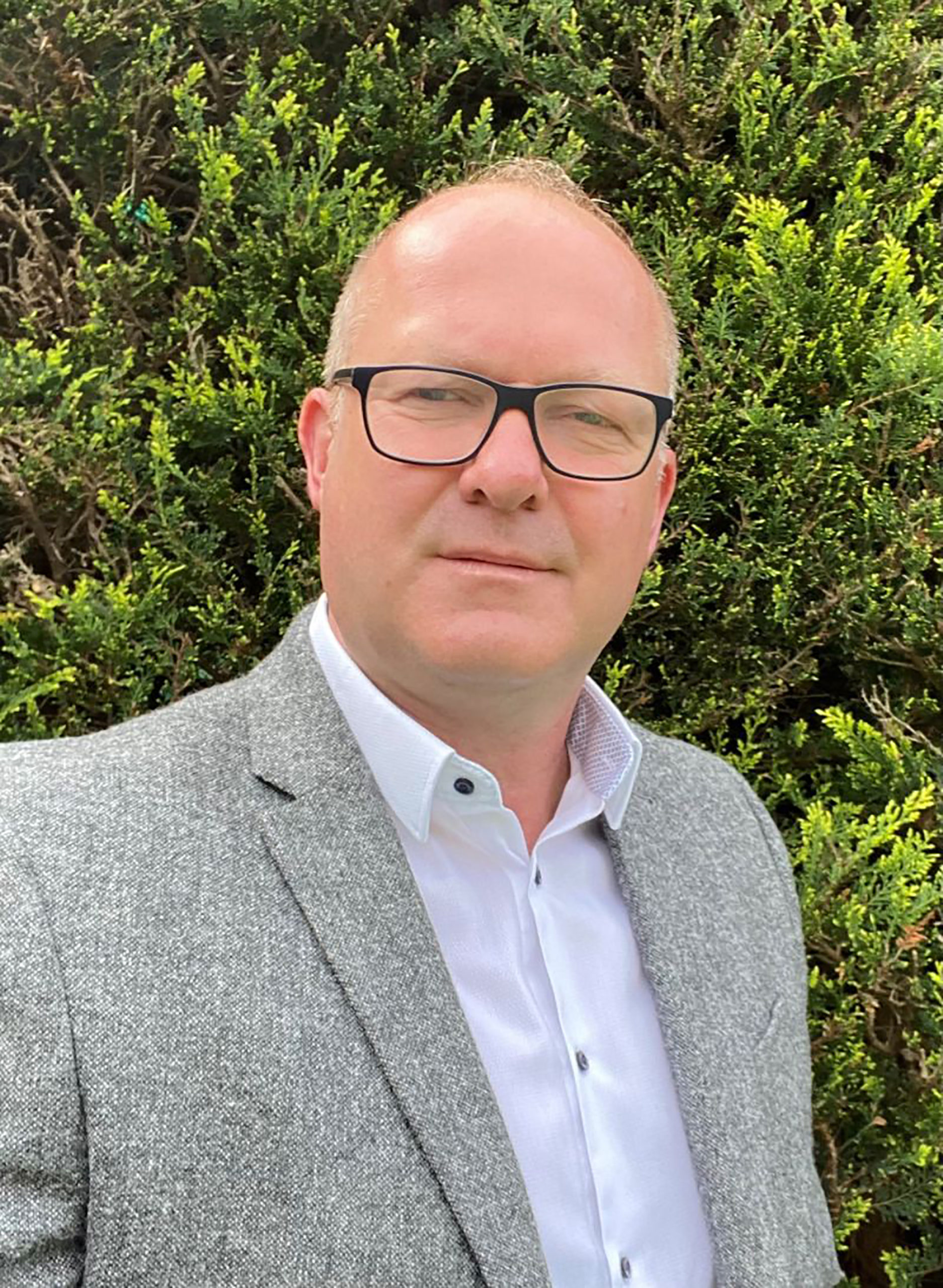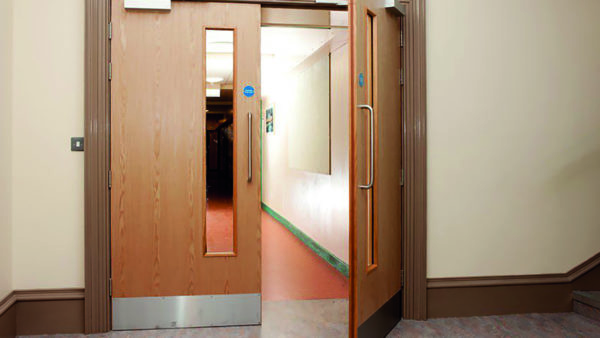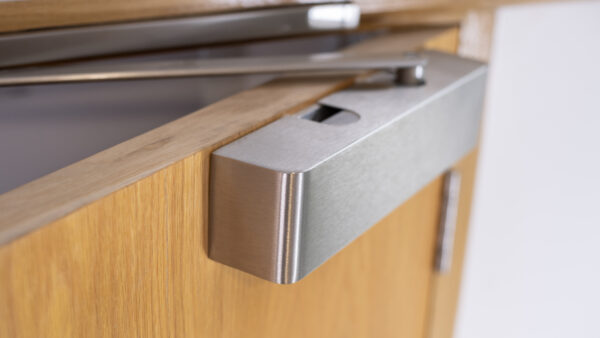
Peter Hutchins DipGAI, director of projects, Franchi
Tell us your career
Starting at Yannedis in 1988 I have always worked within the specification of architectural ironmongery. Working on some prestigious projects, from Windsor Castle to Google HQ, and creating designs such as the 16th century St Georges pattern furniture to LED lit pull handles, I have always been very focused on new products that can be used within our industry. I have developed many architect and designer relationships to help achieve the specification sales and regularly use this for their input for any new developments I and my company want to develop.
Through the years I have also got close to many other business types within the construction industry, to make securing the project easier. This includes main clients and contractors, sub-contractors, project managers and quantity surveyors, installers, manufacturers, and distributors.
What will you bring to the committee?
For many years I was a self-employed consultant but I have now been at Franchi for nine years. I have been instrumental in growing the specification business and have recently become a director to start passing all my knowledge and customer service onto the younger generation. I now believe the time is right to share this knowledge and experience with the members of the GAI.
Back in the early 1990s, after I had passed my DipGAI, I was on the initial committee that started to look at the re-development of the education structure with the goal of changing it from four to three years with the thoughts of the fourth year focusing on the career choice of the student e.g. scheduling, estimating, project management.
There are many challenges ahead of us within our industry now that we are in an era of sustainability, diversity, UK manufacturing and certification”
Peter hutchins
There are many challenges ahead of us within our industry now that we are in an era of sustainability, diversity, UK manufacturing and certification; all of which I am heavily involved with at Franchi. This, and all the above, is why I watned to join the executive to share my experiences with members, planning and assisting the GAI’s future to ensure we continue to grow the brand and educate all.
What challenges is the industry facing?
Further to the fire at Grenfell Tower, Covid, Brexit, Russia-Ukrainian War, global sustainability, and the drive to reduce the carbon footprint, the focus on all doors and ironmongery has become an integral part of every building.
This is a very exciting time for all ironmongers, but it also makes our job a lot more challenging and requires a lot more of a diverse knowledge: not just knowing how to write an ironmongery schedule but being aware of the client’s needs to keep the building safe and secure
in accordance with the latest guidelines. Speaking daily to architects, designers and end users I am aware of the drive for their sustainability targets and EPD’s as well as trying to still achieve the necessary certification; something that I am very involved with at Franchi.
In the 30 plus years I have been in the industry the GAI has done amazing work to keep all members updated with the latest legislation and implement the necessary training. With the many changes that continue to transform our companies, I am now proud to be part of this and use my experience to help steer us all through this delicate transformation to a safer and greener world.

Paul Martin DipGAI, managing director d line Eisenware Ltd
Tell us your career story
My involvement within the architectural hardware specification market now stems beyond 30 years. I applied my training and knowledge, gifted to me through educational support whilst I was employed by Allgood Plc during my early formative years of 1992–1997. Embarking onto the GAI Education Course allowed me to learn and explore what our industry was all about. It was following my examination result after four years of studies that I decided that I wanted to work closer with the businesses that needed assistance with specifications. My route to market was primarily through the architect and interior designers, and over the years has been widely extended into the contractors, sub contractors and also clients and end users.
I left Allgood in 2005 and challenged myself to work at Eisenware Ltd. It was during the first 10 years that I carved myself more deeply in to our industry industry deeper and expanded my knowledge of our trade. Understanding the manufacturers more, working with new businesses and developing strong lifetime relationships with our supply chain.
In 2015 I had the opportunity to take Eisenware into new places, and we joined forces with Danish architectural hardware and sanitary manufacturer
d line. d line was an established, strong high end brand that had lost its way at that time. During the past seven years I have ‘pushed’ d line’s branding back into the minds of the specifier and created a good strong market platform here in the UK and Ireland. Something of which I am incredibly proud.
Today’s focus is all about developing and educating the architects and designers with the best solution for their buildings, ensuring that within our business, we provide the strongest product offering, exemplary service, always maintaining good strong values based around sustainability.”
So why the GAI Executive Committee?
My involvement with the GAI has a long-standing history. Having a father who has provided his life to the industry naturally pushed me into what I do today. He always promoted the best values that the GAI offered to the trade, and with that belief I asked to join the education team (with Rachel Tipton) incorporating my experience within specification writing, and onto the Level 3 Papers. As a volunteer I spent many a summer marking exams and helping prepare for them too.
I was asked to join the Judges Panel for the Specification Awards and have now judged two Awards. It certainly opened my eyes to what the other members can offer within our trade.
My experience will hopefully benefit the Executive Committee and I will certainly bring strong opinions when needed to the members. I will look at making decisions that will benefit all members.
As a vocal advocate of what the GAI stands for, I’d like to think that making decisions that could help shape the future of our industry would be both rewarding and challenging. I currently sit within groups at d line focusing on sustainability, product development and key performance indicators which has allowed great debate and decision-making within our organisation.
Hardware shouldn’t define the building…however it deserves attention and not a last gasp attempt of value engineering to the point of depressing design”
paul martin
What are the challenges the industry is facing currently and how does it equip itself to manage them?
Most of the industry will be wondering what is going to happen over the next 12-18 months. Raw material increases, energy price hikes, and agendas that no doubt could escalate into a long recession. It certainly is very difficult to predict anything right now. During this period, I predict that the market share will be lower for all, and this will create a vacuum of competition, probably more than we are currently seeing. Price wars will continue, but I will predict that if you have a strong emphasis with EPDs (Environmental Product Declarations), a strong narrative and data behind sustainability stories and products that will bring longevity to the market, this is going to be one way forward.
The challenge is already there, and as an industry, we need to challenge ourselves and those that support us, to make improved, informed, and sustainable choices. The days of poorly made substitutes need to be eradicated, and we all should focus on actually ‘up selling’ for once. We saw what happened at Grenfell Tower and now this platform could potentially make for better buildings here in the UK and beyond.
It needs to start at the top of every business, and with the GAI Educational Programme too, ensuring every generation is informed about the benefits of sustainability. This is not a new subject matter, but has certainly been given the main stage recently.
We will also see more buildings remaining where before Councils would have rather had a new shiny build, than repurposing. This will have an impact on the quick turnaround fit out market and create hopefully more projects when we need them.
Trends come and go quite regularly within our trade. I am sure many readers would have thought that coloured hardware 10 years ago, would be a short-lived trend. But it’s been amplified dramatically, certainly through our interiors market. I see this linking well now between rooms/spaces, so much so, that I have seen the A&D Community looking for continuity throughout the buildings, from hardware through to washroom spaces. Perhaps we will see the architectural ironmonger enhance their product offerings too?
Architectural hardware really shouldn’t define the building. It is functional and should not detract from what an architect/contractor has designed. It should however be the finishing touch and still deserves the attention and not a last gasp attempt of ‘value engineering’ to the point of no return into the void of depressive design.








